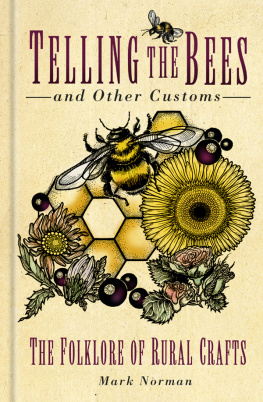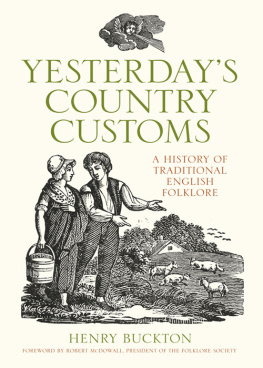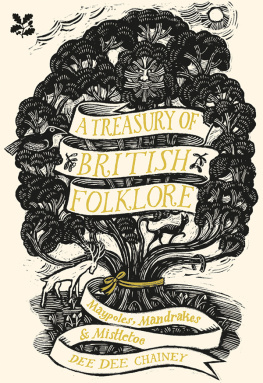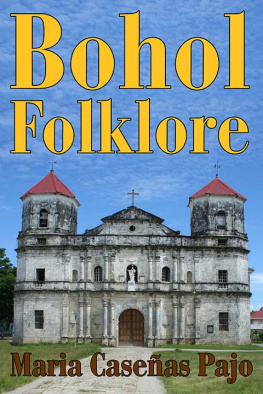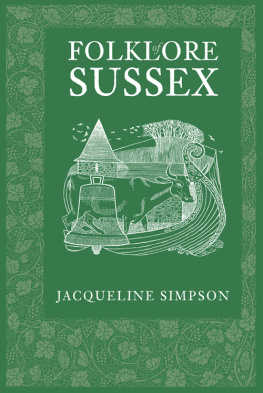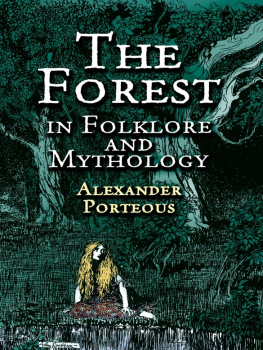ROUTLEDGE LIBRARY EDITIONS: FOLKLORE
Volume 4
CAMBRIDGESHIRE CUSTOMS AND FOLKLORE
CAMBRIDGESHIRE CUSTOMS AND FOLKLORE
ENID PORTER
WITH FENLAND MATERIAL PROVIDED BY W. H. BARRETT
First published in 1969
This edition first published in 2015
by Routledge
2 Park Square, Milton Park, Abingdon, Oxon, OX14 4RN
and by Routledge
52 Vanderbilt Avenue, New York, NY 10017
Routledge is an imprint of the Taylor & Francis Group, an informa business
1969 Enid Porter
All rights reserved. No part of this book may be reprinted or reproduced or utilised in any form or by any electronic, mechanical, or other means, now known or hereafter invented, including photocopying and recording, or in any information storage or retrieval system, without permission in writing from the publishers.
Trademark notice: Product or corporate names may be trademarks or registered trademarks, and are used only for identification and explanation without intent to infringe.
British Library Cataloguing in Publication Data
A catalogue record for this book is available from the British Library
ISBN: 978-1-138-84217-5 (Set)
ISBN: 978-1-138-84256-4 (Volume 4)
Publishers Note
The publisher has gone to great lengths to ensure the quality of this reprint but points out that some imperfections in the original copies may be apparent.
Disclaimer
The publisher has made every effort to trace copyright holders and would welcome correspondence from those they have been unable to trace.
Cambridgeshire Customs and Folklore
by
ENID PORTER
with Fenland material provided by
W.H.BARRETT
First published 1969
by Routledge & Kegan Paul Limited
Broadway House, 6874 Carter Lane
London, E.C.4
Printed in Great Britain
by W & J Mackay & Co Ltd, Chatham
Enid Porter 1969
No part of this book may be reproduced
in any form without permission from
the publisher, except for the quotation
of brief passages in criticism
SBN 7100 6201 X
Acknowledgement of Plates
by courtesy of Mr C. F. Tebbutt. The remainder of the plates were photographed by Edward Leigh, F.I.B.P., F.R.P.S., of Cambridge from objects, documents and photographs in the Cambridge Folk Museum.
Contents
(The following plates fall between )
Plate No.
When I was appointed, in 1947, Curator of the Cambridge and County Folk Museum I had the good fortune to work for the first six months under the guidance of the well-known Bedfordshire historian and authority on folk life and folk museums, Thomas W. Bagshawe, F.S.A. Almost at our first meeting he impressed upon me how important it is to make careful record not only of such details as the measurements, construction, material, age and provenance of all accessions to the museum, but also of the local name of each object, the way it was once used, worn or carried, and of everything that can be learned from the donor concerning any local customs, beliefs or traditions associated with it.
To collect information from someone who presents an object to a museum is fairly easy, for the donor is naturally interested in his gift and is willing to answer straightforward questions about it. Even the most ordinary of objects could, as I soon found, provide valuable information on customs and beliefs provided that the very triviality of the accession did not lead to carelessness or neglect in seeking out this information.
Early in 1949, for example, a woman brought to me, apologising for so ordinary a gift, one of the pink paper sheets stuck with pins which many will remember were once given by drapers in lieu of a farthing change. Because the paper bore the name of a Cambridge draper I accepted the gift, and having learned from the donor its possible age we talked for a while of the changes which have occurred in drapery stores. My visitor was about to leave when I was suddenly reminded that, on the preceding evening, an elderly relative had picked up a pin from the floor reciting, as she did so, the couplet
See a pinthen pick it up
And youll have a years good luck.
I asked my visitor if she knew the rhyme and received not only an affirmative answer but the recollection of her mothers belief concerning the unluckiness of black pins which I have quoted in the final section of this book. This incident proved to me the necessity of being constantly on the alert if opportunities of recording folklore and customs were not to be missed.
If Thomas Bagshawe did his best to teach me how museum objects could lead to a knowledge of folk beliefs, he stressed the even greater importance of going out to collect information rather than to sit and wait for it to be brought to me. In attempting to follow his advice I found that the talks which I was invited to give on the Folk Museum, on local and social history, on folklore and on many other subjects, were extremely useful. Throughout this book I have quoted examples of folklore and custom which I learned, over the inevitable mid-evening cup of tea, from members of Womens Institutes, Parent-Teachers Associations, church organisations, evening classes and a wide variety of other clubs and societies in Cambridge and Cambridgeshire.
As the pages in my notebooks were filled I came to realise more and more that the folklorist, whether professional or amateurand I count myself only the lattermust not only enjoy meeting people of all types and of all ages for their own sake, but must deal with each person in a different way. The direct question and answer method is excellent for gaining information from people voluntarily taking part in a discussion following a talk or lecture, because they are usually free from shyness and inhibition. This method is not, however, successful in other casesusually those of country women over the age of seventyfrom whom information must be extracted gently and often deviously, with the mind alert to warn when to speak and when to keep silent. Overzealous interrogation can lead to information being given which is obviously false or inaccurate. In common with all folklore collectors I have found that infinite patience is often required, especially when dealing with the very old, who are likely to become confused in thought if they feel they are being pressed to talk. It may, therefore, take several meetings with a person before anything valuable is learned.
The recollection of the Holy Thursday processioning in a Cambridge parish, which I have included in Calendar Customs, was related to me by an old woman who lived near the Folk Museum. She often called at my office for a rest before she walked up Castle Hill, and for a talk, for she had, in her younger days, been housekeeper to my great-grandfather. Most of her conversation was often of interesting but, from the folklore and customs point of view, unimportant memories of changes in the Castle Street neighbourhood of Cambridge. A wedding procession, however, leaving St Giless Church opposite the Museum, on the occasion of one of her visits, evoked her recollection of the Beating of the Bounds procession which she had seen as a child.







